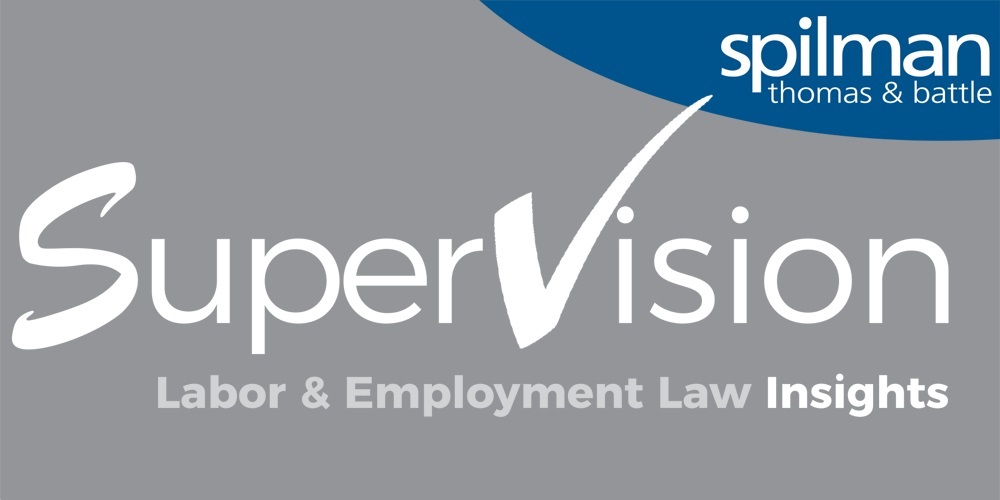Article
Resources
Article
Dust Off the Handbook: Employee Handbooks Need Revised Following Landmark NLRB Decision

The adage “an ounce of prevention is worth a pound of cure” could have been coined with employee handbooks in mind. A well-drafted employee handbook can solve many employment-related problems before they arise by providing clear expectations and information employees need to successfully perform their jobs. It can be tempting to draft an employee handbook and then let it lie dormant assuming it will always remain as useful as the day it was drafted. The problem, however, is the law is constantly changing, the workplace evolves, and employers change their policies, often in practice before being updated in employee handbooks, leaving handbooks either inaccurate or non-compliant with current law. The recent decision by the National Labor Relations Board (NLRB) in Stericycle, Inc., 372 NLRB No. 113 (Aug. 2, 2023) is just such an example.
This article discusses best practices for employee handbooks, accounting for the impact of the recent Stericycle decision.
NLRB’s New Standard and the Need for Handbook Reviews and Revisions
As my colleague, Mitchell J. Rhein noted, in his article published in this edition of SuperVision, in August of 2023, the National Labor Relations Board (NLRB) handed down the Stericycle decision that adopts a new, stricter legal standard for determining if an employee handbook is legal. That new standard holds that a handbook policy violates the Act if it has a “reasonable tendency” to dissuade workers from engaging in organizing activity. This ruling is a significant departure from NLRB precedent, which treated certain types of handbook policies as inherently lawful regardless of the actual language. Policies that have been lawful for years will now need to be re-evaluated under the new standard—and many of those policies may now be invalid or unlawful. Moreover, the Stericycle decision – and the NLRB’s decisions more generally – apply to both unionized and non-unionized workplaces.
Spilman has long recommended that employee handbooks be updated annually. Adopting a cycle for reviewing and updating the employee handbook ensures it will always reflect the current business and legal framework within which the business operates. The Stericycle decision simply enforces the need to review and keep up-to-date the employee handbook.
Best Practices for Employee Handbooks
In creating an employee handbook, the first decision is what policies to commit to writing. An effective employee handbook walks the line between putting nothing in writing versus codifying everything that could happen in the workplace. Certain policies we recommend every handbook contain include: equal employment, anti-discrimination and retaliation; Family Medical Leave Act leave (for those employers subject to the FMLA or other state counterpart); workers’ compensation, reasonable accommodation for disabilities, pregnant employees, and religion; and employee reporting or complaint procedures (including contact information). Additionally, information on benefits, pay practices, vacation and paid leave, employee classifications, and attendance are also helpful as they set expectations with employees and provide answers to their routine questions. Finally, it is imperative that every employee handbook state that employment, except for those employees with a written employment contract, is at-will, and noting affirmatively the employee handbook does not constitute a contract of employment for any employee.
On the other side of the coin are policies that should be avoided or drafted with the advice of legal counsel because they can violate the law, including the new NLRB standard, including:
- Banning employees from discussing compensation or benefits;
- Enforcing “civility” rules;
- Restricting use of company communication resources, like e-mail, Slack, or messaging systems;
- Prohibiting insubordination;
- Limiting criticism, negative comments, or disparagement of the employer’s management or business;
- Restricting behaviors that use cameras or other recording devices in the workplace;
- Restricting employees’ use of social media;
- Requiring confidentiality of workplace investigations or complaints;
- Limiting employees’ comments made to the media or government; and
- Withholding final pay until company property is returned.
The point of this article is not to suggest that policies governing the above types of conduct are absolutely illegal. Rather, policies concerning these types of behavior must appropriately balance the rights of employees against the interests of the employer. Legal counsel is best positioned to ensure your policies are legal and enforceable.
When drafting handbook policies, think of the target audience, i.e., your employees. The handbook needs to be written in clear, simple, easy-to-understand language. The language used in your policy is more important than ever with the recent Stericycle decision. Review your policies to ensure they do not chill or discourage employees’ concerted activities. Also, use neutral gendered terms and avoid overly punitive language. Finally, make sure the handbook is formatted in such a way to be easily usable, with page numbers, a table of contents, index, or other reasonable organizational method.
Finally, do not be afraid to train your managers and employees on the handbook. A handbook no one understands is as good as having no handbook at all. Management should understand the rules they are being asked to enforce, and employees, likewise, should have a clear understanding of the rules governing their conduct. We recommend training on key policies be conducted annually, especially for management personnel.
Spilman recommends employers view their employee handbooks as living documents that grow and change as the employer’s business and the legal landscape in which hit operates changes. Take advantage of the Stericycle decision to revisit employee handbooks. While the review, revision, and training process are investments of time and money, these investments reaps substantial dividends in the long run. The implementation of a well written handbook, backed by documented training, can be an employer’s first line of defense against many common employment-related liability issues, and counsel at Spilman stand ready to assist.


